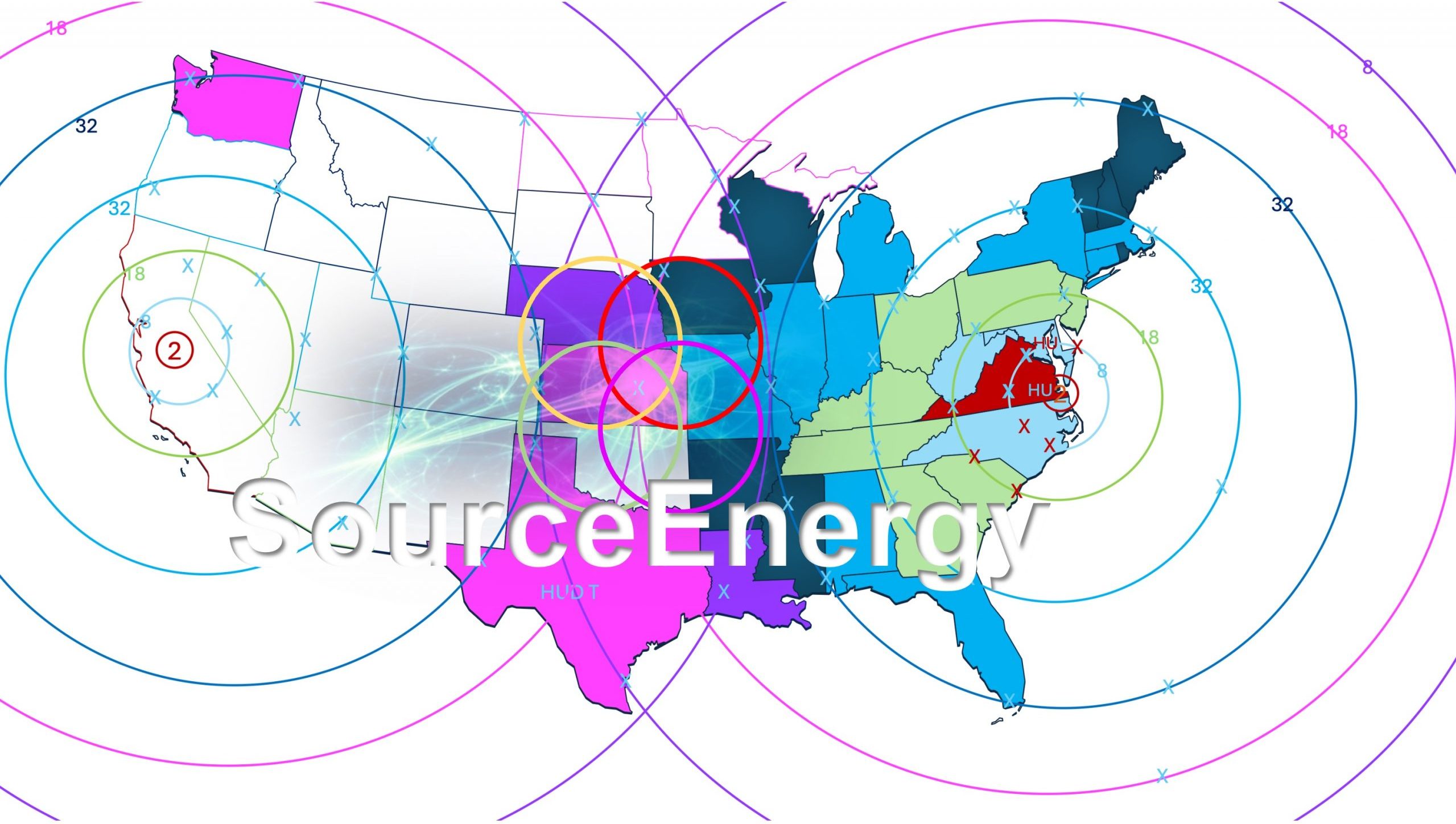The Wall of Sounds

Integrating the Wealth Ecology Model with a sound/note matching framework
To integrate the Wealth Ecology Model with sound and note matching, creating a framework that correlates its core elements (color codes, percentages, and entry levels) with musical attributes is an innovative approach. This fusion of data and music can make the model more accessible and engaging, particularly for auditory learners or in contexts where aural representation is more effective. Here’s a structured framework to achieve this:

1. Color to Note Mappi1ng23456
- Assign each color code in your matrix (e.g., #FF FF FF, #E0 E0 E0, etc.) to a specific musical note or chord.
- Brighter colors (closer to #FF FF FF) map to higher notes on the musical scale, while darker shades (closer to #00 00 00) correspond to lower notes.
- This mapping creates a sonic palette that reflects the visual spectrum of the matrix.

Sample Table
| Color Code | Musical Note | Scale Position | Note Characteristics | Visual Spectrum |
| #FFC2C2 | C | C5 | Major | Bright |
| #FF8080 | E | E5 | Major | Bright |
| #FF4242 | G | G4 | Major | Moderate |
| #C20000 | A | A4 | Minor | Moderate |
| #8000FF | D | D3 | Minor | Dark |
| #420000 | F | F2 | Diminished | Dark |
2. Percentage Representation
- The percentages (100%, 75%, 50%, etc.) in the matrix alter the dynamics (loudness) of the note.
- Higher percentages result in louder, more pronounced notes, while lower percentages yield softer, subtler sounds.
- This aspect translates the quantitative data of the model into auditory intensity.
3. Individual vs. Organization Dimension
- Differentiate between individual and organization percentages using distinct timbres or instruments.
- For example, individual percentages could be represented by piano notes, while organization percentages could use strings.
- This distinction helps in distinguishing the two dimensions sonically.
4. Entry Levels7
- The entry levels (1, 2, 3, etc.) influence the duration and rhythm of the notes.
- Higher entry levels could lead to longer note durations or more complex rhythmic patterns, suggesting a progression or advancement in the model.
- This feature adds a temporal dimension to the model, reflecting the depth or stage of engagement.
5. Blocks (G, S, F)
- Assign a distinct musical theme or motif to each block (G, S, F).
- This ensures coherence within each block and variation across them, reflecting the categorical differences in the model.
- Themes can be variations in melody, harmony, or rhythm that are easily distinguishable.
Implementation
- Software and Tools: Use digital audio workstations (DAWs) like Ableton Live, FL Studio, or Logic Pro to create and manipulate these sounds.
- Algorithmic Composition: Consider developing an algorithm or software that can automatically translate the matrix data into musical compositions based on these rules.
- Interactive Platforms: Develop an interactive platform where users can input data or select matrix cells and hear the corresponding musical output.

Applications
- Educational Tools: Use these sound mappings as a teaching aid to explain the Wealth Ecology Model.
- Presentations: Enhance presentations of the model with auditory components for a more immersive experience.
- Research: Explore how auditory representation of data can aid in understanding complex models and concepts.
Integrating the Wealth Ecology Model with a sound/note matching framework can transform the way the model is perceived and understood, opening up new avenues for engagement and application.
- Standard Musical Notes and Octaves
Notes: The basic musical scale consists of seven notes: A, B, C, D, E, F, G. These notes repeat across various octaves.
Sharps and Flats: Each note (except B and E) can have a sharp (♯) or flat (♭) version, adding more variations. For example, A♯ (or B♭), C♯ (or D♭), etc.
Octaves: An octave is a range of eight notes. The standard piano keyboard has 88 keys, spanning over seven octaves plus a minor third. Each octave is identified by a number, starting from the lowest (sub-bass) frequencies.
Sub-bass: C0 to B0*
Bass: C1 to B1
Low Midrange: C2 to B2
Midrange: C3 to B3
Upper Midrange: C4 to B4 (C4 is known as Middle C)
High: C5 to B5
Very High: C6 to B6
Ultrasonic: C7 to B7 and above
Extended Scale Positions
For more comprehensive musical compositions, extended scales include:
Microtonal Notes: These are notes that exist between the standard semitones. They are often used in various world music genres and advanced Western compositions.
Alternate Tunings: Different musical traditions and genres might tune notes slightly differently, creating variations in scale positions.
Electronic Music: In electronic music, the range can extend beyond the traditional piano keyboard, exploring lower and higher frequencies.
Visual Representation in Your Model
For your Wealth Ecology Model, each of these scale positions could correspond to different color codes or intensities. Given the vast range of possible notes and octaves, you can create a rich and diverse auditory representation of your data.
Note:
This list is based on the standard Western musical scale. Other musical traditions, such as Indian or Middle Eastern, have different scale systems that include more notes and microtones. ↩︎ - Creating a chart for the Color to Note Mapping in the context of the Wealth Ecology Model involves a detailed process. The chart will correlate specific color codes to musical notes or chords, with brighter colors mapping to higher notes and darker shades to lower notes. Here’s a conceptual framework for this chart:
Chart Structure
Color Codes: List the hexadecimal color codes used in your Wealth Ecology Model.
Musical Notes: Assign a corresponding musical note or chord to each color code.
Scale Position: Indicate the position of each note on a musical scale (e.g., C4, D5).
Note Characteristics: Describe the characteristics of the note (e.g., major, minor, diminished).
Visual Spectrum Representation: Provide a visual gradient from bright to dark to visually represent the correlation.
Implementation Notes
Range of Colors: Ensure the color range in the chart covers the entire spectrum used in your model.
Musical Scale: The scale should be broad enough to cover the range of color intensities.
Software Assistance: Utilize graphic design software or a spreadsheet application to create an aesthetically pleasing and functional chart.
User Interaction: Consider making the chart interactive, where selecting a color plays the corresponding note.
↩︎ - Extended Chart Elements
1. Note Intensity and Volume Based on Percentage Representation
Mapping Volume to Percentages: The volume or intensity of each note can correspond to the percentages in your model. For instance, a 100% representation could equate to the full volume of the note, while 50% would halve the volume.
Dynamic Range: Implement a dynamic range for each note to reflect subtle changes in percentages.
2. Timbral Variation for Individual vs. Organization Dimension
Instrument Selection: Assign different instruments to represent the individual and organizational aspects. For example, piano sounds for individual data points and string instruments for organizational data.
Timbre Characteristics: Describe the unique characteristics of each instrument’s sound to ensure clear distinction.
3. Rhythmic and Duration Influences Based on Entry Levels
Note Duration: Higher entry levels could result in longer note durations, adding a temporal dimension to the data representation.
Rhythmic Complexity: Introduce variations in rhythm for different entry levels, making the sonic representation more engaging and informative.
4. Thematic Elements for Blocks (G, S, F)
Musical Themes: Develop distinct musical themes or motifs for each block (G, S, F) in your model.
Consistency Within Blocks: Ensure that each block maintains a coherent sonic theme while differentiating from others.
Implementation Strategy
Software Integration: Use music production software to create and manipulate the sounds according to the chart. This software should allow for adjustments in pitch, volume, duration, and timbre.
User Interface Design: Develop an interface where users can input or select data points from the Wealth Ecology Model and receive immediate auditory feedback based on the chart and extended elements.
Testing and Feedback: Conduct tests with different user groups to gather feedback on the effectiveness and clarity of the sonic representation. Adjust the chart and implementation strategy based on this feedback.
Educational Material: Create materials explaining how to interpret the sonic data, helping users understand the correlation between the visual model and its auditory counterpart.
Continuous Improvement: Regularly update the chart and implementation strategy based on new insights, technological advancements, and user feedback.
This comprehensive framework aims to create an immersive, multi-sensory experience that enhances the understanding and application of the Wealth Ecology Model. By bridging visual data with auditory elements, the model becomes more accessible and engaging, potentially reaching a wider audience and offering deeper insights. ↩︎ - Further Development of the Sonic Framework
Building on the foundational elements, the sonic framework can be expanded to include more nuanced and interactive features, enhancing the user experience and the depth of analysis possible with the Wealth Ecology Model.
5. Harmonic Progressions and Melodic Contours
Harmonic Relationships: Establish harmonic relationships between different colors and percentages, allowing for a more musical and pleasant listening experience.
Melodic Contours: Create melodic lines that follow the progression of data points, providing an intuitive understanding of trends and changes within the model.
6. Interactive Soundscapes
User Interaction: Develop interactive elements where users can manipulate data points and hear the immediate changes in the sonic output.
Real-time Data Sonification: Implement real-time data tracking and sonification, enabling users to hear live changes within the model.
7. Ambient and Background Elements
Ambient Sounds: Incorporate ambient sounds to represent constant or background elements in the model, providing a sonic baseline or context.
Spatial Audio Techniques: Utilize spatial audio techniques to create a three-dimensional soundscape, enhancing the perception of data depth and complexity.
8. Integration with Visual Elements
Synchronized Audio-Visual Display: Ensure that the sonic output is tightly synchronized with visual displays, offering a cohesive multi-sensory experience.
Enhanced Data Visualization: Use sound to highlight key aspects of visual data, guiding the user’s attention to significant trends or anomalies.
9. Customization and User Preferences
Personalization Options: Allow users to customize the sonic experience according to their preferences, such as choosing different instruments or adjusting the complexity of the sound.
Accessibility Features: Include options for users with different needs, ensuring the model is accessible to a wide range of audiences, including those with visual impairments.
10. Educational and Analytical Tools
Guided Tutorials: Offer guided tutorials that explain how to interpret and interact with the sonic model.
Analytical Insights: Provide tools that help users analyze the sonic data, drawing parallels between the auditory experience and the underlying Wealth Ecology principles.
Continuous Evolution and Community Engagement
Feedback Loop: Establish a feedback loop with users to continuously refine the sonic representation based on real-world usage and experiences.
Community Collaborations: Engage with a community of users, musicians, and data scientists to explore innovative ways of expanding and enriching the model.
Research and Publications: Conduct research on the efficacy of sonic data representation and publish findings to contribute to the broader field of data sonification and multi-sensory data interpretation.
Through these advanced elements and strategies, the sonic framework becomes a powerful tool for exploring, understanding, and communicating the intricacies of the Wealth Ecology Model. It transcends traditional data analysis methods by offering a unique and engaging way to experience and interact with complex data, potentially revolutionizing how we perceive and utilize information in various fields. ↩︎ - Advanced Implementation and Application
11. Dynamic Range and Expressiveness
Dynamic Range: Implement a wide dynamic range in the sonic output, representing the spectrum of data intensity and impact in the Wealth Ecology Model.
Expressive Nuances: Integrate expressive nuances like vibrato, dynamics, and articulation, reflecting the subtleties and complexities of the data.
12. Cross-Disciplinary Integration
Cross-Disciplinary Sounds: Merge sounds from different disciplines (e.g., natural sounds for environmental data, industrial sounds for economic data) to create a richer, more diverse auditory experience.
Collaborations with Artists: Work with sound artists and musicians to create unique interpretations of the data, fostering a creative approach to understanding the Wealth Ecology Model.
13. Temporal Evolution and Historical Comparison
Temporal Sequences: Design temporal sequences that allow users to hear how data and trends have evolved over time.
Historical Comparisons: Facilitate auditory comparisons between historical and current data, offering insights into long-term trends and changes.
14. Predictive Sonification and Scenario Modeling
Predictive Sonification: Implement predictive algorithms to sonify potential future scenarios based on current data trends.
Scenario Modeling: Allow users to modify variables and hear the potential auditory outcomes, aiding in scenario planning and decision-making.
15. International and Cultural Adaptation
Cultural Variations: Adapt the soundscapes to reflect different cultural contexts, making the model globally accessible and relevant.
Multilingual Support: Incorporate multilingual narrations or explanations, broadening the model’s reach and understanding.
16. Public Engagement and Education
Public Installations: Create public sound installations or exhibits that allow broader audiences to experience and interact with the Wealth Ecology Model.
Educational Programs: Develop educational programs and workshops that use the sonic framework to teach concepts of Wealth Ecology, appealing to various learning styles.
17. Advanced Analytical Capabilities
Machine Learning Integration: Utilize machine learning to refine the sonification process, making it more accurate and responsive to complex datasets.
Advanced Analytics: Provide advanced analytical tools that use sound to reveal patterns, correlations, and insights that might be missed in traditional visual analysis.
18. Sustainability and Environmental Awareness
Eco-Conscious Themes: Embed eco-conscious themes in the soundscapes, promoting awareness and understanding of sustainability within the Wealth Ecology framework.
Soundscapes for Environmental Data: Specifically design soundscapes for environmental data, making abstract concepts like carbon footprint or energy consumption more tangible and comprehensible.
Conclusion: A Symphony of Data
By integrating these advanced elements into the sonic framework of the Wealth Ecology Model, the data becomes not just information to be analyzed but a symphony to be experienced. This approach not only enhances the understanding and appreciation of the Wealth Ecology principles but also democratizes data interpretation, making it accessible and engaging to a wide audience, from experts to the general public. It positions the Wealth Ecology Model not just as a tool for analysis but as a platform for innovation, education, and collaborative exploration, resonating across various domains and cultures. ↩︎ - 19. Interactive and Immersive Experiences
Interactive Installations: Develop interactive sound installations where users can manipulate data points and immediately hear the auditory changes, fostering a deeper engagement with the Wealth Ecology Model.
Virtual Reality Integrations: Utilize virtual reality (VR) to create immersive experiences where users can ‘walk through’ data landscapes, experiencing the sonic and visual aspects of the model in a fully integrated environment.
20. Customization and User-Centric Design
User Profiles: Enable users to create profiles that customize the sonification based on their preferences, interests, or area of expertise within the Wealth Ecology Model.
Adaptive Learning Systems: Implement adaptive learning algorithms that adjust the sonification based on user interaction patterns, enhancing the personal relevance and effectiveness of the data representation.
21. Accessibility and Inclusivity
Accessibility Features: Ensure the sonification model is accessible to users with varying abilities, including those with visual impairments, by incorporating features like haptic feedback or detailed narrations.
Inclusive Design: Consider cultural and individual diversity in designing the soundscapes, ensuring that the model is inclusive and resonates with a global audience.
22. Integration with Other Data Visualization Tools
Multi-modal Data Representation: Pair the sonification with other data visualization tools (e.g., graphs, heat maps) to provide a multi-modal data interpretation experience.
APIs for Third-party Integration: Develop APIs that allow for the integration of the Wealth Ecology Model’s sonification with other platforms and tools, increasing its versatility and range of application.
23. Continuous Evolution and Community Involvement
Open-source Development: Adopt an open-source approach to encourage community involvement in the development and refinement of the sonification model.
Feedback and Iteration: Establish a feedback loop with users to continuously evolve and enhance the model based on real-world usage and insights.
24. Global Challenges and Solutions Representation
Thematic Soundscapes for Global Issues: Create thematic soundscapes that represent global challenges like climate change, poverty, and innovation, providing an auditory narrative of these issues within the Wealth Ecology framework.
Solution-oriented Auditory Stories: Craft sound-based stories that highlight potential solutions and strategies, encouraging a solution-oriented mindset among users.
25. Partnerships and Collaborative Projects
Academic and Research Collaborations: Partner with academic institutions and research organizations to explore novel applications of the sonification model in education and research.
Industry Partnerships: Collaborate with industry leaders to integrate the Wealth Ecology Model into business analytics, offering a unique perspective on corporate data and strategy.
Final Thoughts: Harmonizing Data with Humanity
The expanded implementation of the sonic representation of the Wealth Ecology Model stands at the intersection of technology, art, and humanity. It not only transforms data into sound but also translates it into understanding, emotion, and action. This approach transcends conventional data analysis, offering a rich, layered experience that connects individuals to the complex dynamics of wealth ecology. By harmonizing data with humanity, the model becomes a powerful tool for education, awareness, and change, echoing the principles of Wealth Ecology across a global stage. ↩︎ - Standard Musical Notes and Octaves
Notes: The basic musical scale consists of seven notes: A, B, C, D, E, F, G. These notes repeat across various octaves.
Sharps and Flats: Each note (except B and E) can have a sharp (♯) or flat (♭) version, adding more variations. For example, A♯ (or B♭), C♯ (or D♭), etc.
Octaves: An octave is a range of eight notes. The standard piano keyboard has 88 keys, spanning over seven octaves plus a minor third. Each octave is identified by a number, starting from the lowest (sub-bass) frequencies.
Sub-bass*: C0 to B0*
Bass: C1 to B1
Low Midrange: C2 to B2
Midrange: C3 to B3
Upper Midrange: C4 to B4 (C4 is known as Middle C)
High: C5 to B5
Very High: C6 to B6
Ultrasonic: C7 to B7 and above
Extended Scale Positions
For more comprehensive musical compositions, extended scales include:
Microtonal Notes: These are notes that exist between the standard semitones. They are often used in various world music genres and advanced Western compositions.
Alternate Tunings: Different musical traditions and genres might tune notes slightly differently, creating variations in scale positions.
Electronic Music: In electronic music, the range can extend beyond the traditional piano keyboard, exploring lower and higher frequencies.
Visual Representation in Your Model
For your Wealth Ecology Model, each of these scale positions could correspond to different color codes or intensities. Given the vast range of possible notes and octaves, you can create a rich and diverse auditory representation of your data.
Note:
This list is based on the standard Western musical scale. Other musical traditions, such as Indian or Middle Eastern, have different scale systems that include more notes and microtones.
Sub-bass frequencies typically range from 20 Hz to 60 Hz and are often felt as much as they are heard, given their low frequency. Earth sounds in the sub-bass category are often natural phenomena that create resonant, deep, and sometimes infrasonic vibrations. Here’s a list of such sounds:
Volcanic Eruptions: The rumbling sounds from volcanic eruptions produce powerful sub-bass frequencies.
Earthquakes: The seismic activity generates low-frequency sounds, some of which fall into the sub-bass category.
Thunder: Deep thunderclaps, especially from large storm systems, can produce substantial sub-bass sounds.
Ocean Waves: The sound of large ocean waves crashing, particularly during storms, contains sub-bass elements.
Glacial Movements: The groaning and creaking of glaciers, and the sound of icebergs calving, can generate deep, resonant sounds.
Geothermal Activity: Sounds from geysers and hot springs, including underground rumbling, often have sub-bass frequencies.
Large Waterfalls: The roar of massive waterfalls like Victoria Falls or Niagara Falls contains significant sub-bass frequencies.
Wind in Caves or Canyons: Strong wind moving through large caves or canyons can create eerie, deep-toned sounds.
Avalanches: The deep rumble of an avalanche carries a mix of frequencies, including sub-bass.
Animal Sounds: Certain large animals, such as elephants or whales, produce vocalizations that include sub-bass frequencies.
Meteorological Phenomena: Some rare atmospheric conditions, like the infrasound from tornadoes or large storms, can generate sub-bass sounds.
Tidal Bores: The phenomenon of a tidal bore, where the tide moves up a river or narrow bay against the direction of the river’s current, can create deep, resonant sounds.
These sounds are often used in scientific studies to monitor environmental and geological changes. In the context of the Wealth Ecology Model, understanding and respecting these natural sub-bass sounds is a part of recognizing the interconnectedness of natural systems and the value of the Earth’s natural resources.
Earth sounds in the bass category, typically ranging from 60 Hz to 250 Hz, are those that fall within the lower end of frequencies audible to the human ear. These sounds are often rich and resonant, providing a deep auditory experience. Here is a list of such Earth sounds:
Moderate Wind: The sound of wind blowing through trees or across landscapes, which can create a consistent, soothing bass tone.
Gentle Ocean Waves: The rhythmic sound of ocean waves breaking on the shore often falls into the bass frequency range.
River Currents: The continuous, flowing sound of a river or large stream has a bass quality.
Rainfall: Heavy rain, especially when it hits surfaces like roofs or leaves, produces a bass-heavy sound.
Distant Thunder: Unlike the sub-bass of close thunderclaps, distant thunder often resonates in the bass range.
Animal Calls: Certain animals, such as larger birds (like geese or eagles) or large mammals (like lions or bears), produce calls that contain bass frequencies.
Rustling Leaves: The sound of leaves rustling in a forest or large tree, particularly in a gentle breeze, has a bass-like quality.
Water Dripping in Caves: The echoing sound of water dripping in large caves often resonates in the bass range.
Minor Geological Movements: Subtle movements of the Earth, such as small rockslides or shifts within caves, can produce bass sounds.
Geyser Eruptions: The initial stages of geyser eruptions, with water and steam moving underground, often produce bass sounds.
Frog Calls: Many species of frogs have calls that resonate in the lower frequency range.
Underwater Sounds: Various underwater sounds, such as movements of large fish or underwater currents, fall into the bass category.
In the context of the Wealth Ecology Model, these natural bass sounds are integral to the environmental soundscape and contribute to the overall health and balance of ecosystems. They can be crucial in various fields, from bioacoustics research to environmental monitoring, and offer a unique perspective on the interconnectedness of natural systems. Understanding and appreciating these sounds can enhance our awareness of the environment and encourage practices that support ecological harmony and sustainability.
Earth sounds in the low midrange category, typically spanning frequencies from 250 Hz to 500 Hz, are often associated with natural phenomena and elements that produce richer, fuller tones. These sounds are more clearly audible and distinct to the human ear compared to bass or sub-bass frequencies. Here’s a list of such Earth sounds:
Birdsong: Many birds produce calls and songs that fall within this frequency range, offering a diverse array of natural melodies.
Flowing Streams: Smaller streams and creeks, with their babbling and flowing water, often create sounds in the low midrange.
Light Rain: The sound of light rain, particularly on surfaces like leaves or softer ground, typically falls in this frequency spectrum.
Rustling Grass: The sound of grasses and smaller plants swaying in the breeze usually resides in the low midrange.
Insect Buzzing and Chirping: Insects like bees, cicadas, and crickets often produce sounds in the low midrange, contributing significantly to the natural soundscape.
Murmuring Crowds: The collective murmur of a crowd at a distance often falls into this frequency range.
Gentle Animal Calls: Certain smaller mammals, such as rabbits or foxes, emit sounds that can be classified within the low midrange frequencies.
Tree Branch Movement: The creaking and groaning of tree branches, especially in a gentle wind, often produce rich, low midrange sounds.
Soft Wind Gusts: Unlike stronger winds that can create a more bass-heavy sound, gentle wind gusts tend to produce softer, low midrange noises.
River Rapids: The less intense sections of river rapids, where the water flow is moderate, often generate sounds in this range.
Frog Croaks: Some species of frogs have croaks and calls that fall within the low midrange.
Ambient Forest Noises: General forest ambience, including a mix of leaves, branches, and wildlife, often creates a symphony of sounds in the low midrange.
In the context of the Wealth Ecology Model, these natural sounds are vital elements of our ecological system. They play a role in maintaining the health and balance of ecosystems and can be indicators of environmental changes. Recognizing and respecting these sounds can foster a deeper connection with nature and emphasize the importance of preserving natural habitats and biodiversity. Understanding these auditory elements of our environment also enriches our appreciation of the world’s natural wealth and diversity.
Earth sounds in the midrange category, typically falling between 500 Hz to 2 kHz, are quite prominent and easily discernible to the human ear. These sounds are more articulate and clear, forming a significant part of our acoustic environment. Here’s a list of such Earth sounds:
Human Speech: Most of the fundamental frequencies of human speech, especially in conversation, fall within this midrange category.
Bird Chirping: Many bird species have chirps and songs that are predominantly in the midrange, making them clearly audible.
Forest Ambiance: A combination of sounds like smaller branches snapping, leaves rustling, and some animal calls contribute to the overall forest soundscape in this range.
Medium Wind: Wind blowing through an open area or against structures often produces sounds in the midrange.
Running Water: The sound of water in a medium-sized stream or a small waterfall typically falls into this frequency range.
Certain Insect Noises: Sounds from insects like bees or certain types of beetles, which are louder and more resonant than the subtler buzzing of smaller insects.
Domestic Animal Sounds: Common domestic animals like dogs barking or cats meowing are often in the midrange.
Light Rain on Hard Surfaces: Raindrops hitting surfaces such as pavement, roofs, or cars usually produce midrange sounds.
Some Bird of Prey Calls: Eagles, hawks, and other birds of prey often emit calls that fall within this frequency range.
Frog Ribbits in a Pond: The collective ribbits and croaks from a pond full of frogs, which can be quite resonant and clear.
Distant Traffic Noise: The hum or buzz from distant traffic often falls into the midrange.
Ocean Waves on a Beach: The sound of moderate waves crashing on a beach, which is more defined and less bass-heavy than large, stormy waves.
In the Wealth Ecology Model, these sounds are crucial in creating a balanced and healthy environment. They offer insights into the state of various ecosystems and are indicative of the richness and diversity of life. Recognizing and valuing these sounds within the midrange spectrum can lead to greater appreciation and stewardship of our natural world, underlining the interconnectedness of sound, health, and environmental sustainability.
Earth sounds in the upper midrange category, typically falling between 2 kHz and 4 kHz, are characterized by their clarity and presence. These sounds are critical in defining the texture and detail of the natural soundscape. Here’s a list of such Earth sounds:
Bird Calls and Songs: Many birds produce calls and songs with clear, piercing qualities that fall into this frequency range, helping their sounds travel over longer distances.
Cricket Chirping: The high-pitched chirping of crickets, a staple of evening and nighttime soundscapes, often resides in the upper midrange.
Small Water Splashes: Sounds of small streams trickling over rocks or the splash of water in a shallow pond.
Leaves Rustling: The higher-pitched rustling of dry leaves or smaller foliage in a gentle breeze.
Certain Frog Calls: Some species of frogs emit higher-pitched croaks and calls that fall within the upper midrange.
Insect Buzzing: Many smaller insects, like bees or mosquitoes, produce a buzzing sound that is prominent in the upper midrange.
Wind Through Grass or Small Plants: A slightly higher-pitched and more delicate sound compared to wind through larger trees.
High-Pitched Animal Noises: Some small mammals (like rodents) or young animals often make higher-pitched sounds.
Certain Bird Wing Flutters: The fluttering of wings from smaller bird species can create a rapid, high-pitched sound.
Rain on Metal or Glass Surfaces: The sharper, more defined sound of rain hitting surfaces like metal roofs or windows.
Breaking Twigs or Dry Brush: The snap of small twigs or dry brush underfoot, which creates a quick, sharp noise.
High Tones in Natural Ambient Sounds: Various natural ambient sounds, like a forest or meadow, often have elements in the upper midrange that add detail to the overall soundscape.
These sounds, falling within the upper midrange, play a significant role in the Wealth Ecology Model by contributing to the acoustic diversity and health of ecosystems. They are crucial for the communication of many animal species and are often indicators of the environmental quality. Appreciating and protecting these sounds is part of maintaining the balance and integrity of natural habitats, highlighting the interconnectedness of sound, ecological health, and the overall wellbeing of the planet.
Earth sounds in the high-frequency category, typically ranging from 4 kHz to 20 kHz, are characterized by their sharpness and clarity. These sounds are important in the natural soundscape, often associated with subtle and detailed auditory cues in the environment. Here’s a list of Earth sounds in the high-frequency category:
Birdsong: High-frequency chirping and tweeting of small birds, which are crucial for communication among avian species.
Insect Buzzing and Chirping: High-pitched sounds from insects like bees, mosquitoes, and certain types of grasshoppers or cicadas.
Bat Echolocation: Bats emit high-frequency sounds for navigation and hunting, often beyond the range of human hearing.
Wind Whistling: High-frequency whistling sounds when wind passes through narrow gaps or over sharp edges.
Small Mammal Calls: The squeaks and calls of small mammals like mice or chipmunks.
Leaf Rustling: The delicate, high-pitched sound of leaves and smaller twigs rustling in the wind.
High-Pitched Bird Calls: Certain bird species, like finches or warblers, produce very high-pitched calls and songs.
Raindrops on Fine Surfaces: The light, high-pitched sound of rain falling on surfaces like leaves or fine gravel.
Falling Pine Needles or Small Seeds: The gentle, high-frequency sound of pine needles or small seeds falling to the ground.
Distant Thunder: The high-frequency components of thunder can be heard as it rolls and echoes, especially at a distance.
Frogs and Toads: Some species of frogs and toads have high-pitched croaking or peeping sounds, particularly during mating seasons.
Underwater Sounds: High-frequency clicks and chirps made by certain aquatic creatures, like some species of fish or crustaceans.
In the context of the Wealth Ecology Model, these high-frequency sounds are integral to understanding the health and dynamics of ecosystems. They often indicate the presence and well-being of various species and contribute to the overall acoustic biodiversity. Recognizing and protecting these high-frequency sounds helps maintain ecological balance, promotes biodiversity, and ensures the sustainability of natural habitats. Understanding these auditory elements also enriches our appreciation of the planet’s natural wealth and diversity.
Earth sounds in the very high-frequency category, typically extending beyond 20 kHz, often reach into the ultrasonic range, which is above the threshold of human hearing. Many of these sounds are significant in the animal kingdom for communication and navigation, but are generally imperceptible to humans without specialized equipment. Here’s a list of such Earth sounds:
Bat Echolocation Calls: Bats emit ultrasonic sounds for echolocation that are often beyond human hearing. These sounds are crucial for their navigation and hunting.
Insect Communication: Certain insects, like some species of beetles and grasshoppers, communicate using ultrasonic frequencies that are inaudible to humans.
Rodent Sounds: Mice, rats, and other small rodents often communicate using very high-frequency sounds that are not detectable by the human ear.
Dolphin and Whale Echolocation: Many marine mammals, such as dolphins and some species of whales, use ultrasonic sounds for echolocation and communication in the ocean.
Ultrasonic Bird Calls: Some birds produce ultrasonic calls, either as part of their normal vocalizations or in specific situations like predator deterrence.
Natural Friction: Certain natural friction events, such as the rubbing of dry leaves or the movement of small sand particles, can produce very high-frequency sounds.
Seismic Activity: Some geological processes, including certain types of seismic activity, may emit sounds in the ultrasonic range.
Insect Wing Movement: The rapid wing movements of certain insects, like bees or some types of flies, can produce ultrasonic vibrations.
Amphibian Calls: A few species of amphibians may emit calls that reach into very high frequencies, especially during mating seasons.
Ultrasonic Rustling: Movements in dense underbrush or thick grass can sometimes create ultrasonic noise as plants and small creatures interact.
In the Wealth Ecology Model, understanding and respecting these very high-frequency sounds is important for ecological research and conservation. Although they are beyond human hearing, these sounds are a vital part of the acoustic ecology of many environments. Studying and protecting these ultrasonic sounds contributes to the preservation of biodiversity and the health of ecosystems. It also underscores the vastness and intricacy of natural systems, many aspects of which remain just beyond human sensory perception, yet are integral to the interconnected web of life on Earth.
Ultrasound refers to sound waves with frequencies higher than the upper limit of human hearing, typically above 20 kHz. In the natural world, many species utilize ultrasound for various purposes, such as navigation, communication, and hunting. While these sounds are generally imperceptible to the human ear without special equipment, they play crucial roles in ecological systems. Here’s a list of Earth sounds in the ultrasound category:
Bat Echolocation: Bats emit ultrasonic pulses to navigate and locate prey in the dark. These echolocation calls are a vital part of their survival mechanism.
Dolphin and Whale Communication: Many marine mammals, like dolphins and whales, use ultrasonic frequencies for echolocation and complex communication in the ocean.
Rodent Communication: Mice, rats, and other rodents often communicate using ultrasonic frequencies, particularly for mating calls and social interactions.
Insect Communication: Some insects, such as certain species of moths and beetles, use ultrasonic frequencies for mating calls or to evade predators.
Ultrasonic Bird Calls: A few bird species produce ultrasonic calls, either for communication or as a deterrent against predators.
Amphibian Calls: Some species of amphibians, particularly certain frogs, can produce ultrasonic vocalizations, often related to mating and territorial displays.
Seismic Activity: Certain geological activities can generate ultrasonic waves, which can be detected and studied by scientists to understand earth processes.
Ultrasonic Rustling in Vegetation: The movement of small animals or insects through vegetation can create ultrasonic rustling sounds.
Fish Communication: Some species of fish are known to produce ultrasonic sounds for communication, especially in murky or dark water environments.
Predator-Prey Interactions: Some predators and prey in the animal kingdom use ultrasonic sounds as part of their hunting or evasion strategies.
In the context of the Wealth Ecology Model, these ultrasonic sounds, although imperceptible to humans, are an essential component of the natural soundscape. They contribute to the balance and health of ecosystems by facilitating key biological processes and interactions. Understanding and respecting these sounds, even though they are beyond our direct sensory experience, underscores the importance of considering all aspects of the ecosystem in environmental stewardship and conservation efforts. Studying these sounds can also lead to technological innovations and deeper insights into the complex dynamics of natural systems.
↩︎




